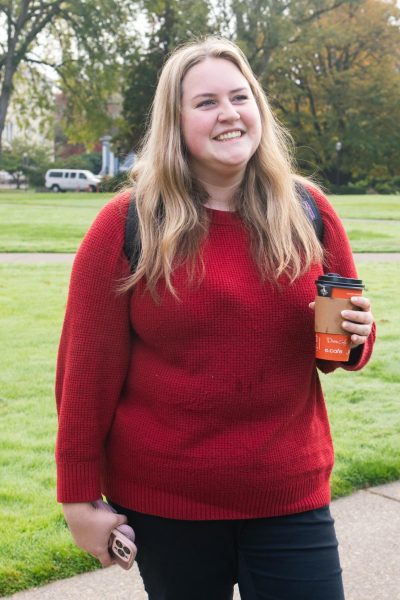- Beavers Digest
- Beavers Digest / Culture
- Beavers Digest / Culture / Community
- Beavers Digest / Culture / People
- Beavers Digest / Experience
- Beavers Digest / Experience / Wellness
Warning signs of abusive relationships & where to go for help
Your sister’s boyfriend forbids her from having male friends, your co-worker’s partner constantly monitors their whereabouts or your own friend tells you what to do and what to say.
Most of us would like to think it could never happen to us, but abusive relationships can happen to anyone, at any point, in any type of relationship.
In fact, the National Coalition Against Domestic Violence reported last year that in Oregon, 39.8% of women and 36.2% of men experienced intimate partner physical violence and/or stalking within their lifetime.
While examples of abusive relationships in the media often are displayed as being physically violent, and exclusive to romantic relationships, abuse is not always like this and it can manifest itself in a variety of ways in both romantic and platonic relationships. Even friendships can turn abusive.
Other common types of abuse include emotional abuse,verbal abuse, sexual abuse, financial abuse and digital abuse, according to Brittany Coté, the interim interpersonal violence services communicator for Counseling and Psychological Services at Oregon State University.
Knowing how to spot the signs, and what to do if you think you or someone you know is experiencing an abusive relationship, can help better prepare you if you find yourself in that unfortunate situation.
“Awareness of abuse and its widespread impact is the first prevention method along with educating students on consent, healthy relationships, warning signs, bystander intervention and how to be an ally to survivors,” Coté said.
Early signs of abuse can vary from relationship to relationship, but they typically involve some form of control and isolation, said Allison Riser, co-director of the Center for Advocacy, Prevention and Education at OSU.
Other early signs include “extreme jealousy, unrealistic expectations, quick involvement in the relationship (sometimes referred to as “love bombing”), blaming others for their problems rather than taking responsibility and outbursts of unpredictable anger,” Coté said.
It is important to note that abuse does not differ much in the different types of relationships. All kinds of abuse can occur in any kind of relationship – platonic, romantic or familial, according to Riser.
“There are many similarities, and at the root of all violence is power, control, discrimination and oppression,” Riser said.
Abuse can also sometimes occur in a cycle that can take anywhere from a few hours to even a year or more to go through. Knowing the cycle of abuse — which includes tension building, incidents of violence, reconciliation and calm — can help in identifying the abuse and escaping it.
“Typically, the length of time in the ‘reconciliation’ and ‘calm’ stages decreases over time as violence becomes more frequent and intense,” Coté said. “The way out of the cycle of abuse is leaving the relationship or some form of intervention.”
If you suspect that a friend is in an abusive relationship, reaching out and supporting them is an important first step in helping them safely leave the situation.
“Providing your friend with a safe, nonjudgmental place to talk about it can go a long way in helping your friend feel supported and recognize the unhealthy behaviors in the relationship,” Coté said.
You can also direct them to various resources and forms of support, but you should allow them to make their own decisions.
“When they are ready, you can help them seek professional support,” Coté said.
The advocacy team at CAPE can also provide specific advice on how to best support your friend.
Realizing you yourself are in the middle of an abusive relationship can be difficult, however it is important to reach out for help.
“It can help to tell a trusted friend, family member, mentor or therapist about your experience and work to develop a safety plan and identify additional resources and support,” Coté said.
Within OSU, there are a variety of resources available. The advocacy team at CAPE works with survivors to provide them with access to the necessary resources within OSU for their situation and referrals to additional outside resources. Resources offered by CAPE include housing accommodations, academic and financial assistance, wellness support, information on reporting options, emotional support, safety planning and medical advocacy. CAPS is another resource which provides students crisis response counseling with trained mental health professionals.
Outside of OSU, there is the Center Against Rape and Domestic Violence, located on 2208 SW 3rd St in Corvallis, and Sarah’s Place, located on 1046 SW Sixth Ave in Albany.
CARDV provides similar resources to CAPE, such as support, information, safety planning and other resources to survivors and their allies. They additionally operate two safe shelters in confidential locations.
For survivors of sexual assault, domestic abuse and sex trafficking, Sarah’s Place, which includes a sexual assault nurse examiner, offers immediate medical treatment, documentation of injuries, medication to fight STD or HIV infection, counseling and advocacy outside of the emergency room.
For a more detailed list of reporting options in the community, check out this story.
“Remember that no one deserves to experience abuse in any form,” Coté said. “Everyone is responsible for their own behavior and no matter what the ‘reason’ was, it is not your fault!”







